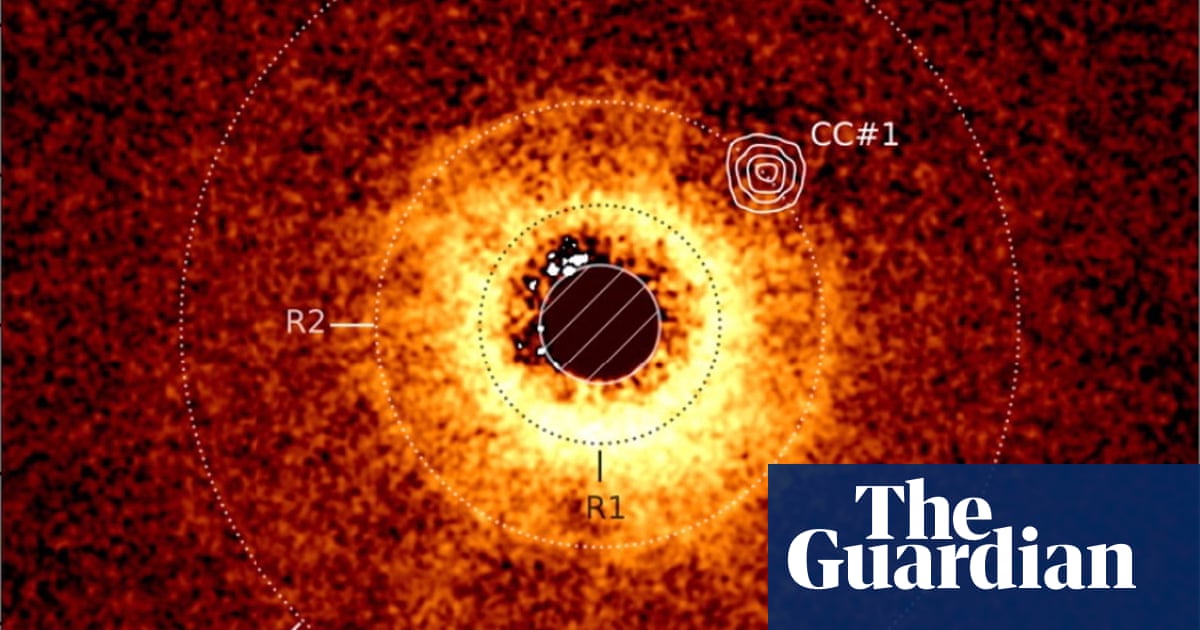TheJames Webb space telescopehas captured unprecedented direct images of a planet beyond our own solar system, in its first exoplanet discovery.
The observations reveal a planet, which has been called TWA 7 b, carving its way through a disc of glowing dust and rocky debris in orbit around a star 110 light years from Earth.
About the mass of Saturn, the planet is 10 times less massive than any previous exoplanet to be directly observed with a telescope and provides fresh insights into a planetary system in its infancy.
Dr Anne-Marie Lagrange, an astrophysicist at the Paris Observatory who led the observations, said: “Here we’re looking at a system that is about 6m years old, so we are really witnessing the youth of the planetary system.”
Since the first exoplanet was discovered in 1992, nearly 6,000 more have been discovered, but almost all of these have been identified through indirect methods such as spotting the planet’s shadow passing across the face of their host star.
Imaging exoplanets directly remains a huge challenge as they are far less bright than their host star and, as seen from Earth, located very close to their star. To overcome this, Lagrange and colleagues developed a telescopic attachment designed to reproduce the effect of an eclipse, masking the star to make it easier to observe surrounding objects that would otherwise be drowned out.
This allowed them to observe the star TWA7 “pole on” – in effect looking down on its planetary disc from above.
The images reveal three concentric rings of dust and debris around the star – structures that have previously been attributed to unseen “shepherd” planets carving through the disc. In this case, the astronomers were able to make observations of a planet itself, which appears as a brighter source within a narrow ring.
The planet is thought to be a gas giant, about the mass of Saturn, making it by far the smallest-mass planet to be observed by direct imagery. Positioned about 50 times as far from its star as Earth is from the sun, TWA 7 b has an orbital period of several hundred years.
The finding is reported in the journalNature.
